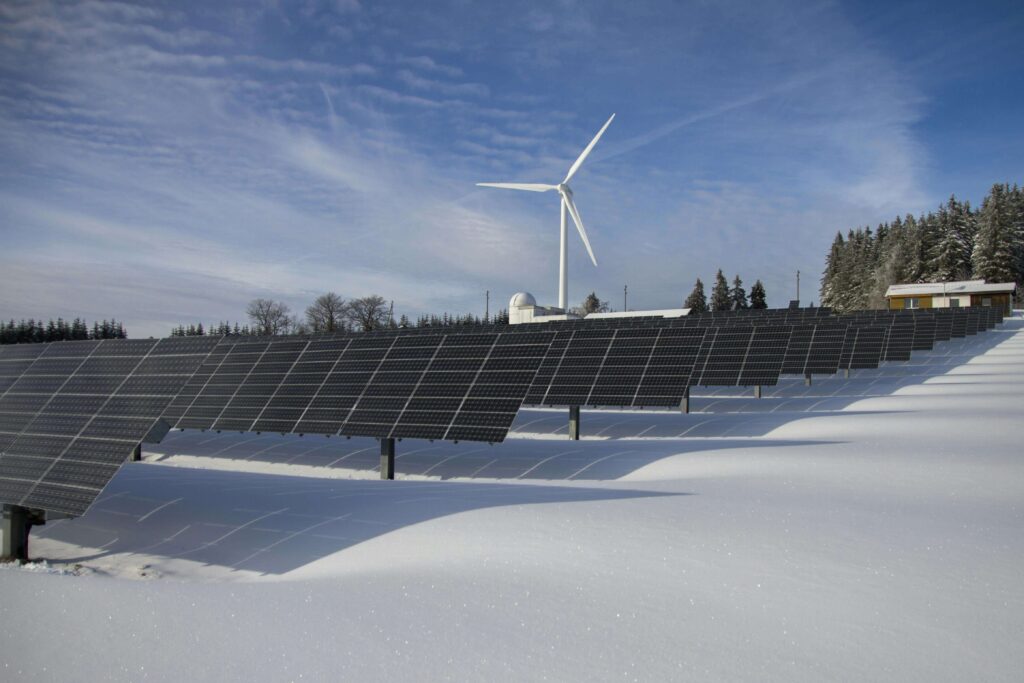Why in News? (Energy)
The World Solar Report 2024, released on November 5, highlights a massive surge in global capacity, growing from 1.22 GW in 2000 to 1,419 GW in 2023, with a remarkable CAGR of 36%. It now accounts for three-quarters of renewable energy additions worldwide, marking its pivotal role in transitioning to clean energy.

Relevance for UPSC Exam
Prelims:
- Focus on new technologies like quantum dot solar cells, BIPV, and agrivoltaics.
- Solar sector statistics, India’s position in global rankings.
Mains (GS-III):
- Science and Technology: Role of innovation in renewable energy.
- Environment: Solar’s contribution to reducing carbon emissions.
- Economy: Employment and rural transformation through solar technologies.
- International Relations: Role of ISA in global cooperation.
Key Highlights from the Report (Solar Energy)
a. Global Market Overview
- China leads with 43% (609 GW) of the world’s solar capacity.
- India, Japan, and Germany each contribute 5-6%, while emerging markets like Brazil, Australia, Italy, and Spain account for 2%.
- China dominates solar PV manufacturing, producing 97% of wafers, 89% of cells, and 83% of modules globally.
b. Falling Costs Driving Growth
- Average auction prices for utility-scale solar PV projects fell to $40/MWh globally in 2024, with India achieving $34/MWh, the lowest globally.
- Solar PV investments are expected to surpass $500 billion in 2024, eclipsing investments in all other energy generation forms.
c. Solar Employment and Impact on Industries
- Employment surged to 7.1 million jobs in 2023, up from 4.9 million in 2022, highlighting solar’s economic potential.
- Solar powered irrigation systems are revolutionizing agriculture, with agrivoltaic systems providing electricity and shade for livestock.
Emerging Solar Energy Technologies
a. Efficiency and Longevity
- Quantum Dot Solar Cells: Achieved 18.1% efficiency, with potential for atmospheric water harvesting.
- Self-Healing Solar Panels: Enhance durability and reduce maintenance.
- Building Integrated Photovoltaics (BIPV): Transparent solar panels integrate into building infrastructure.
b. Sustainable Applications
- Solar Phyto-Mining: Extracts metals from soil using plants, powered by solar energy, offering a green alternative to mining.
- Solar Paver Blocks: Integrate solar tech into urban infrastructure.
- Circular Economy: Recycling panels and reducing reliance on critical materials like lithium and rare earth elements.
Challenges and Opportunities
Challenges
- Overdependence on China: India and other nations must diversify manufacturing to avoid supply chain bottlenecks.
- Recycling and Waste Management: With increased solar installations, managing waste from outdated panels is a growing concern.
- Technology Transfer: Least Developed Countries (LDCs) and Small Island Developing States (SIDS) require financial and technical support.
Opportunities
- Job Creation: Continued growth in the solar sector will boost employment opportunities.
- Rural Transformation: Pay-as-you-go models make solar accessible to remote areas, supporting sustainable development.
- Agrivoltaics: Offers dual benefits of energy generation and enhanced agricultural productivity.
Way Forward
- Boost Domestic Manufacturing: India should enhance its production capacity in solar PV to reduce reliance on imports.
- Encourage Innovation: Invest in research on emerging technologies like self-healing panels and quantum dot cells.
- Strengthen Global Alliances: Promote technology and finance transfer through platforms like the International Solar Alliance (ISA).
- Focus on Recycling: Develop robust recycling systems to manage waste sustainably.
- Incentivize Rural Solar Adoption: Expand pay-as-you-go models to ensure affordability and accessibility.
Solar energy has transformed from a niche sector to a cornerstone of global energy strategies. India’s proactive measures in leveraging its resources and innovation capabilities will position it as a global leader in the solar revolution.


